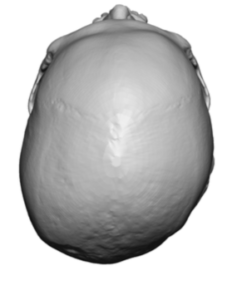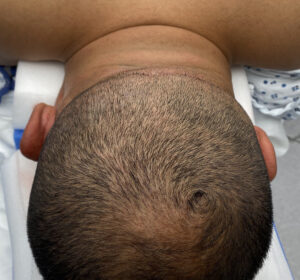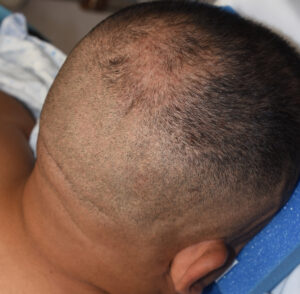Background: Plagiocephaly is a well known congenital head shape abnormality that affects the entire skull. This global affect is why it is known as the twisted or oblique head shape. But the most severely affected area is usually the back of the head with the greatest oblique flattening effect. It is always the number #1 priority for the adult patient to correct.
In the spirit of limiting the length of the scalp incision to prevent creating an adverse aesthetic tradeoff, the custom skull implant approach works the best. It is also the most precise since it uses a 3D skull CT scan of the patient. In that design process the first step is to make a mirror image of the opposite good side of the back of the head onto the flat side to see how much augmentation is needed.
This is often all that may be needed for improvement but it alone does not always make for optimal symmetry. There is a soft tissue deficiency as well because of the overlying scalp and the thickness of the posterior temporal muscle and fascia. This needs to be considered as well since the 3D CT scan is only of bone.
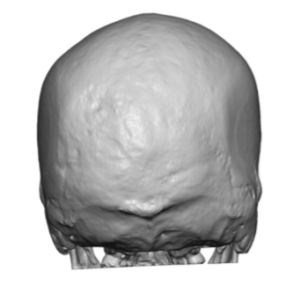

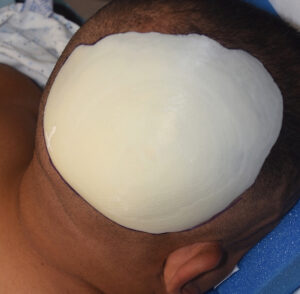
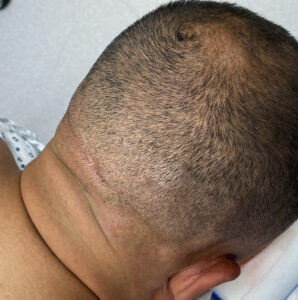
A plagiocephalic skull implant does not create every skull shape issue associated with this type of head shape deformity. It does address the most severe aspect of plagiocephaly and in its design the associated soft tissue deficiencies must be considered as well.
Case Highlights:
1) The most severe manifestation of most plagiocephalies is the flatter back of the head on one side.
2) Building out the flat back of the head is done with a custom skull implant that must extend around onto the posterior temporal region towards the ear.
3) The plagiocephaly custom skull implant covers the occipital-parietal-temporal areas and must also consider the thickness of the scalp as well in its design.
Dr. Barry Eppley
Indianapolis, Indiana




